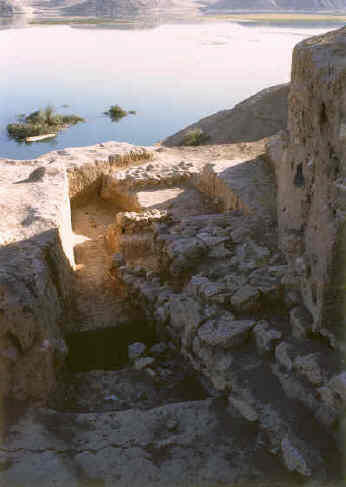|
Other Archaeological Sites / The Neolithic of the Levant (500 Page Book Online) Til Barsib -- Barsip -- (Tell Ahmar) in Syria
PDF Document: Carved Ivories from Til Barsib (2.72 MB)
Barsib is the ancient Aramaean name of Ahmar. The Assyrian King Shalmaneser III captured the city in 856 BC and renamed it Kar-Shulmanu-Ashared and it remained a provincial capital of the Assyrian empire for some 250 years. Although the city was located more than 500 kilometres away from the capital cities of Assyria it nevertheless is strongly representative of true Assyrian culture. Indeed the style and manufacture of much of the material remains, the pottery and other finds discovered at Ahmar, are indistinguishable from those found at Nimrud or Nineveh. The city's value to the Assyrians lay in its strategic location; situated at the confluence of two rivers -- the Euphrates and the Sajur. It is relatively easy to cross at this point and it is one of the few places where there is an interruption in the line of cliffs that flank the west bank of the Euphrates ... |

